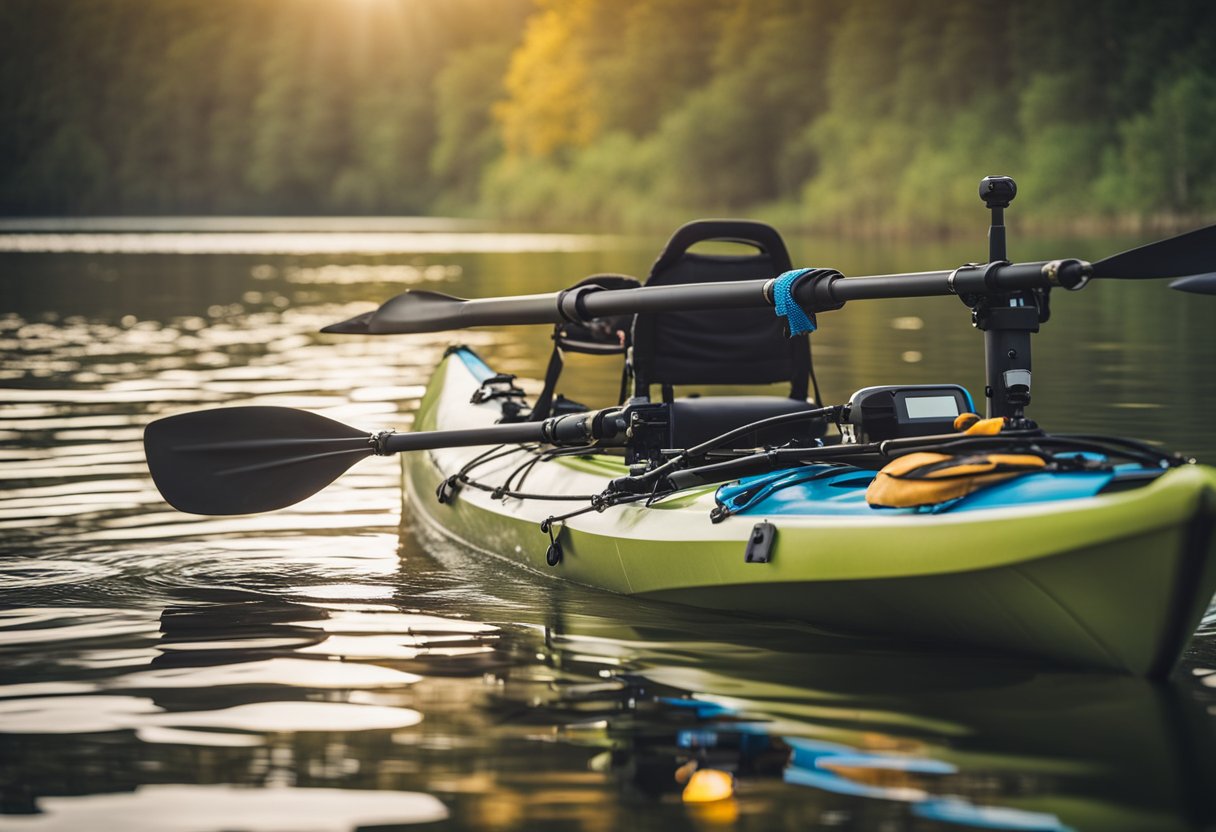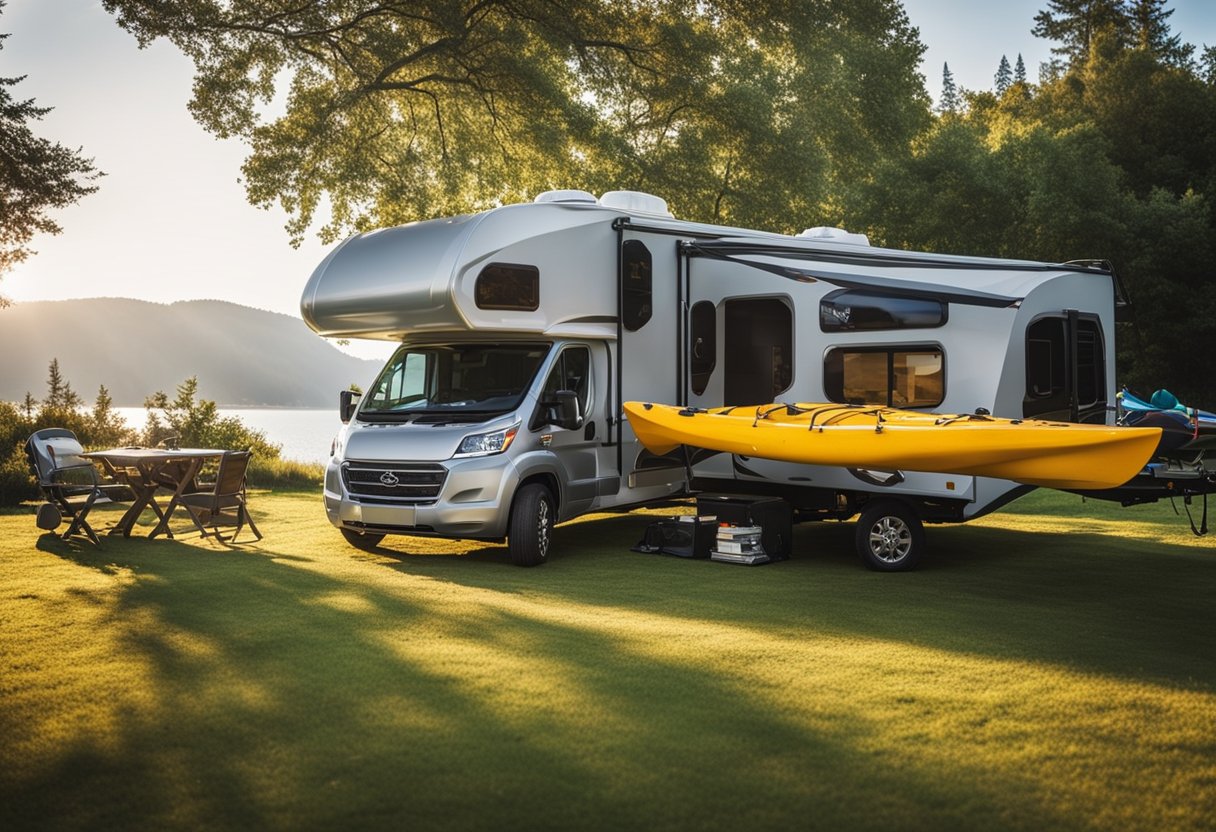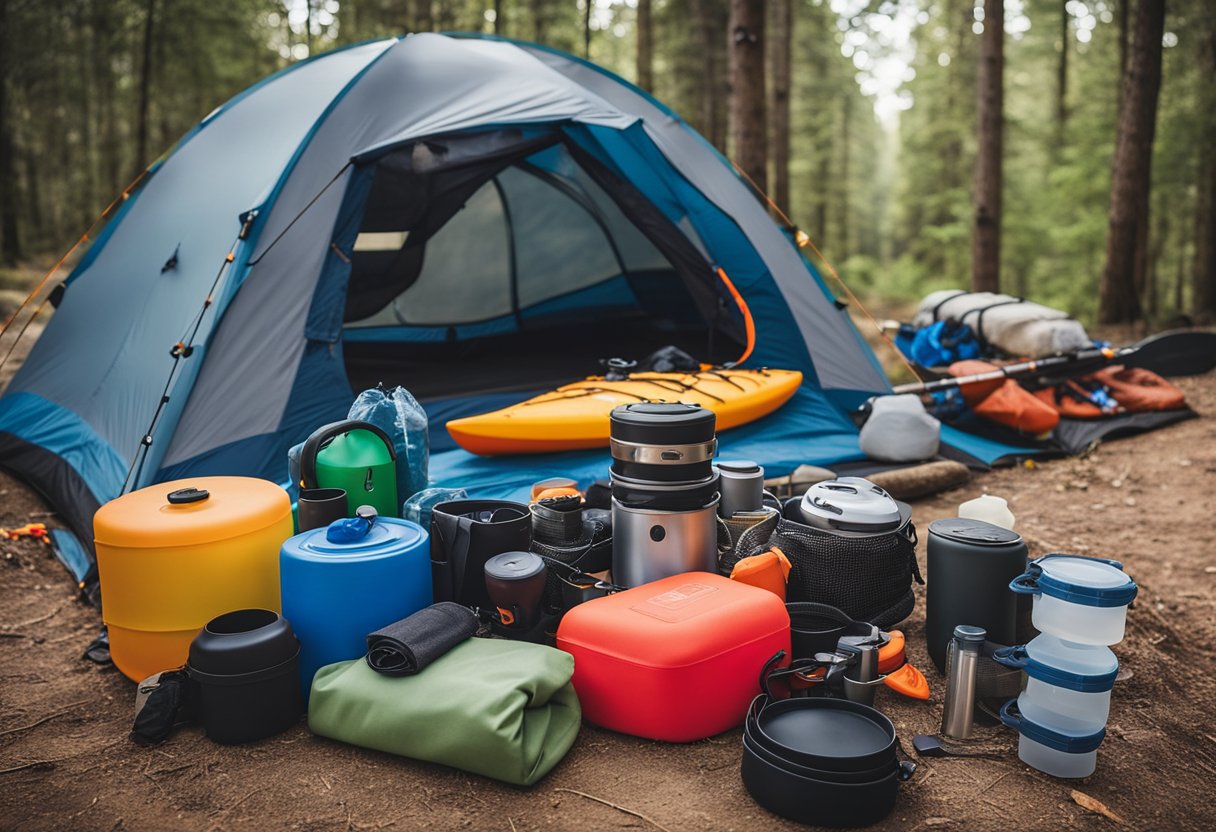Kayak fishing is an exciting and rewarding experience for anglers of all levels. However, to make the most of your time on the water, it’s important to have a kayak that is properly rigged for fishing. Customizing your kayak for fishing can enhance your comfort, safety, and success on the water.

There are many rigging tips and ideas that can help you customize your kayak for fishing. Some anglers prefer to keep things simple, while others like to add a variety of accessories to their kayaks. From rod holders and fish finders to anchor systems and live wells, there are countless ways to rig your kayak for fishing. The key is to find the right balance of functionality and convenience that works best for you.
Whether you’re a seasoned kayak angler or just starting out, customizing your kayak for fishing is a fun and rewarding process. By taking the time to rig your kayak with the right accessories and equipment, you can improve your chances of catching fish and make your time on the water more enjoyable. In the following article, we will explore some of the best rigging tips and ideas for customizing your kayak for fishing.
Understanding Kayak Fishing Basics

Types of Fishing Kayaks
When it comes to kayak fishing, choosing the right kayak is essential. There are several types of fishing kayaks available, each with its own unique features and benefits. Some of the most popular types of fishing kayaks include:
- Sit-on-top kayaks: These kayaks are great for beginners and are easy to get in and out of. They are also very stable and can be used in a variety of water conditions.
- Sit-inside kayaks: These kayaks are more traditional and offer better protection from the elements. They are also faster and more maneuverable than sit-on-top kayaks.
- Inflatable kayaks: These kayaks are great for those who don’t have a lot of storage space or who want to travel with their kayak. They are also very durable and can be used in a variety of water conditions.
Essential Kayak Fishing Gear
In addition to choosing the right kayak, there are several other pieces of gear that are essential for kayak fishing. Some of the most important pieces of gear include:
- Paddle: A good paddle is essential for maneuvering your kayak and getting to your fishing spot.
- Life jacket: Safety should always be a top priority when kayak fishing, and a good life jacket can help keep you safe in case of an accident.
- Fishing rod and reel: Obviously, you’ll need a fishing rod and reel to catch fish. Make sure you choose a rod and reel that are appropriate for the type of fishing you’ll be doing.
- Tackle: You’ll also need a variety of tackle, including lures, hooks, and sinkers, to catch fish.
- Anchor: An anchor can help keep your kayak in one place while you fish, especially if you’re fishing in a current.
By understanding the basics of kayak fishing and choosing the right gear, you can increase your chances of having a successful and enjoyable fishing trip.
Kayak Customization Fundamentals
Customizing a kayak for fishing can greatly enhance the overall experience on the water. However, before diving into specific rigging tips and ideas, it’s important to understand some fundamental principles of kayak customization.
Stability Enhancements
Stability is crucial when fishing from a kayak, especially in rough waters or when casting from a standing position. To enhance stability, kayakers can consider the following options:
- Wider Hull: A wider hull can provide more stability, but may sacrifice speed and maneuverability.
- Outriggers: Outriggers, also known as stabilizers, attach to the sides of the kayak and provide additional stability. They can be inflatable or rigid and can be removed when not needed.
- Ballast: Adding weight to the kayak can help improve stability, but may also affect speed and maneuverability. Kayakers can add ballast in the form of sandbags, weights, or even water-filled jugs.
Comfort Upgrades
Fishing from a kayak can be uncomfortable, especially during long trips. To enhance comfort, kayakers can consider the following upgrades:
- Seat Cushions: Adding a cushion to the kayak seat can provide extra comfort and support during long trips.
- Footrests: Adjustable footrests can help provide a comfortable and stable position for the feet, reducing fatigue and discomfort.
- Paddle Grips: Paddle grips can help reduce hand fatigue and provide a more comfortable grip during long paddles.
By considering these fundamental principles of kayak customization, kayakers can make informed decisions when choosing specific rigging tips and ideas for their fishing kayak.
Mounting Systems and Storage Solutions

Rod Holders and Mounts
When customizing a kayak for fishing, it is important to have a secure and accessible place to store your fishing rods. Rod holders and mounts are essential for keeping your rods organized and within reach while on the water. There are a variety of options available, including flush mount rod holders, adjustable rod holders, and clamp-on rod holders.
Flush mount rod holders are mounted directly into the kayak and provide a sleek and streamlined look. Adjustable rod holders allow you to change the angle and position of your rod, while clamp-on rod holders can be easily attached to various parts of the kayak. It is important to choose a rod holder or mount that is compatible with your kayak’s design and construction.
Tackle Storage Options
Having a well-organized tackle storage system is crucial for any fishing trip. There are a variety of storage solutions available, including soft-sided tackle bags, hard tackle boxes, and specialized kayak storage systems.
Soft-sided tackle bags are lightweight and easy to transport, while hard tackle boxes provide more protection for your gear. Specialized kayak storage systems, such as crate systems or gear tracks, can be mounted directly onto the kayak and provide easy access to your tackle. It is important to choose a storage solution that fits your specific needs and the type of fishing you will be doing.
Anchor Systems
An anchor system is an important addition to any kayak fishing setup, as it allows you to stay in one place and focus on fishing without drifting away. There are a variety of anchor systems available, including traditional anchor and rope setups, as well as newer options such as stakeout poles and anchor trolleys.
Traditional anchor systems require a secure anchor point and can be more difficult to manage in a kayak. Stakeout poles are lightweight and easy to use, but may not be suitable for all types of water conditions. Anchor trolleys allow you to easily adjust the position of your anchor and can be used in a variety of water conditions. It is important to choose an anchor system that is appropriate for the type of fishing you will be doing and the water conditions you will be facing.
Electronics and Navigation

Fish Finder Installation
A fish finder is an essential tool for any angler, and installing one on your kayak can greatly increase your chances of success. Before installing a fish finder, you’ll need to decide where to mount it and how to power it.
One popular option is to mount the fish finder on the kayak’s hull using a suction cup mount. This allows for easy removal and repositioning of the fish finder, but may not provide the most stable mounting option. Another option is to mount the fish finder on a dedicated bracket attached to the kayak’s deck, providing a more secure and stable mounting option.
Once you’ve chosen a mounting location, you’ll need to connect the fish finder to a power source. Many kayaks have built-in wiring for electronics, but if your kayak doesn’t, you’ll need to install a separate battery or use a portable power source.
GPS and Mapping Tools
In addition to a fish finder, a GPS and mapping tool can be extremely useful for kayak fishing. GPS can help you navigate to your desired fishing spot and mark locations where you’ve had success in the past. Mapping tools can also help you identify underwater structure and potential fishing hotspots.
One option for GPS and mapping is to use a smartphone app, such as Navionics or Fishbrain. These apps can provide detailed maps and GPS navigation, but may require a cellular or internet connection.
Another option is to use a dedicated marine GPS device, such as a Garmin or Lowrance unit. These devices often have more advanced features, such as the ability to create custom maps and mark specific waypoints.
No matter which option you choose, having a GPS and mapping tool can greatly enhance your kayak fishing experience.
Personalizing Your Kayak
When it comes to customizing a fishing kayak, there are many options available to make it unique and functional. Personalizing a kayak can not only make it look good, but it can also improve its performance and comfort. Here are two ideas to personalize your kayak:
Hull Wraps and Decals
One of the easiest and most popular ways to personalize a kayak is by adding a hull wrap or decal. Hull wraps are vinyl graphics that cover the entire kayak, while decals are smaller graphics that can be placed on specific areas of the kayak. Both options are customizable, allowing anglers to add their own designs, logos, or even their name.
Hull wraps and decals not only add a personal touch to the kayak, but they can also protect the hull from scratches and UV damage. Additionally, they can make the kayak more visible on the water, which is important for safety.
Custom Seating
Fishing kayaks are designed to be comfortable for long hours on the water, but customizing the seating can take it to the next level. Upgrading the seat to a more comfortable and supportive one can make a huge difference in the angler’s experience.
There are many aftermarket seats available that offer more padding, lumbar support, and adjustability. Some seats even come with built-in rod holders, tackle storage, and other features that can make fishing more convenient.
Overall, personalizing a kayak can be a fun and rewarding experience for any angler. Whether it’s adding a hull wrap or upgrading the seating, these customizations can make the kayak more functional and comfortable for a day on the water.
Safety and Maintenance

Personal Flotation Devices
When kayak fishing, safety should always be a top priority. Personal flotation devices (PFDs) are essential for ensuring the safety of the kayaker. A PFD should be worn at all times when on the water, even if the kayaker is a strong swimmer. The PFD should fit snugly and comfortably, and it should be rated for the kayaker’s weight and the type of water they will be kayaking in.
Kayakers should also consider wearing a whistle and carrying a signaling device, such as a mirror or a flare, in case of emergency. It is important to check the PFD and signaling devices regularly to ensure they are in good working condition.
Kayak Care and Repair
Proper maintenance and care can extend the life of a kayak and ensure its safety on the water. Kayakers should inspect their kayak before and after each use, checking for any signs of damage or wear. Any damage should be repaired promptly to prevent further damage and ensure safety.
Kayakers should also clean their kayak after each use, using a mild soap and water to remove any dirt or debris. It is important to avoid using harsh chemicals or abrasive materials that could damage the kayak’s surface.
In addition to regular cleaning and inspection, kayakers should store their kayak properly when not in use. This includes keeping it out of direct sunlight and storing it in a dry, cool place.
By following these safety and maintenance tips, kayakers can enjoy their time on the water with peace of mind.
Advanced Rigging Techniques

DIY Modifications
For those looking to customize their kayak for fishing, DIY modifications can be a cost-effective solution. One popular modification is creating a rod holder using PVC pipes. By cutting the pipes to size and attaching them to the kayak, anglers can keep their rods securely in place while fishing. Another option is to install a fish finder, which can be done by attaching the device to the kayak using a mount. This allows anglers to locate fish and navigate to the best spots.
Lighting and Visibility
Lighting and visibility are important considerations for kayak fishing, especially for those who fish at dawn or dusk. One option is to install LED lights on the kayak to improve visibility. These lights can be attached to the kayak using adhesive strips or mounted on a pole. Another option is to use reflective tape, which can be applied to the kayak to make it more visible in low-light conditions. Additionally, anglers can wear reflective clothing or attach a flag to the kayak to increase visibility.
Overall, these advanced rigging techniques can help anglers customize their kayak for fishing and improve their overall experience on the water.




